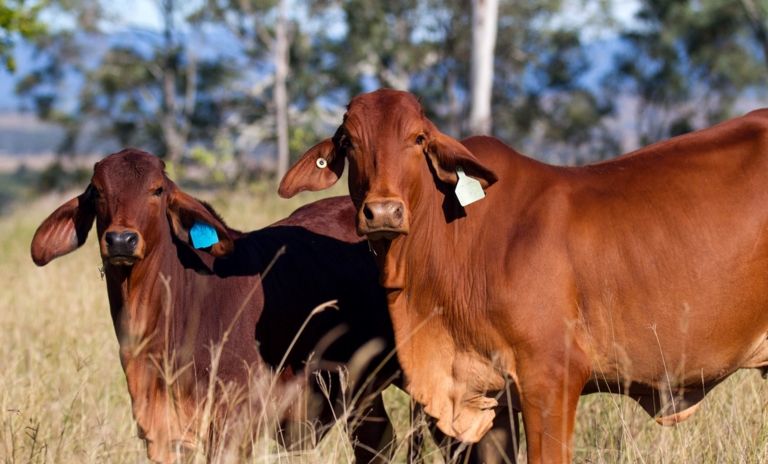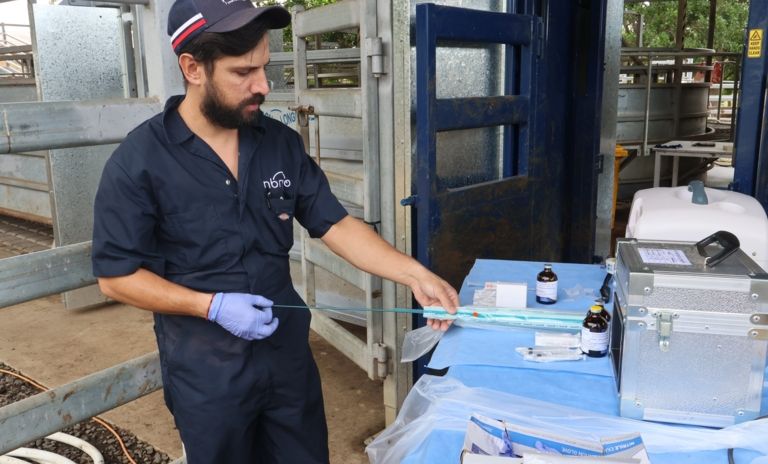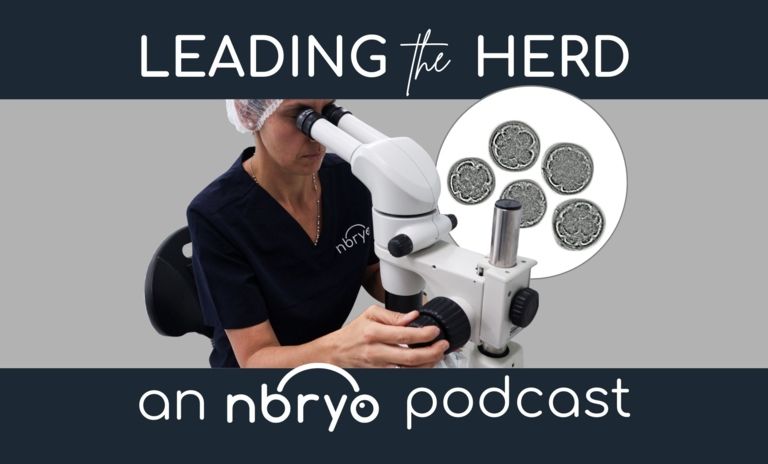

Synchronising ovulation of recipient females is a necessary step to enable embryo transfer (ET), and the most common synchronisation method used is the fixed-time protocol. The benefit of fixed-time embryo transfer (FTET) is that embryos can be transferred into large groups of animals which can streamline on farm management of cattle and labour. Using FTET, not only can the day of transfer be pre-determined, which means that organising specialist embryo transfer technicians and/or scheduling fresh embryo transfer is possible, but the management of the recipients is made easier. Once recipient females have been selected and managed, below are some tips to ensure the best outcomes from your embryo transfer. (See also our recipient selection resource).
Best practice is to pre-screen females before synchronisation. An examination of the reproductive tract to ensure females have a normal cervix, are cycling, free from reproductive disease and are not pregnant should be performed to ensure that all females are ideal candidates for receiving in embryo. To ensure they are not pregnant, they must be apart from the bull for at least 30 days or as indicated by your veterinarian.
There are two ways to organise the transfer of embryos into a recipient female. This can be either by heat detection and subsequent transfer 7 days later or by fixed-time embryo transfer (FTET) after recipient females have been treated with a synchronisation protocol. Obvious benefits of FTET are larger number of embryos able to be transferred on one day which is ideal when organising ET technicians and optimising labour around transfer process. Transfer of embryos after natural heat detection is more common in Dairy herds, where heat detection is easier and when ET technicians are available for smaller numbers of transfers.
There are a variety of suitable synchronisation protocols that are suitable for preparing recipients for FTET. The selection of which is usually determined by the type of recipient female that has been selected and any regulatory boundaries in terms of drug use. It is advised that your prescribing veterinarian is consulted to advise on an appropriate synchronisation protocol. If a farm has been using FTET or even fixed-time artificial insemination (FTAI) before successfully, usually it is recommended to remain using a protocol that is known to be successful in that operation.
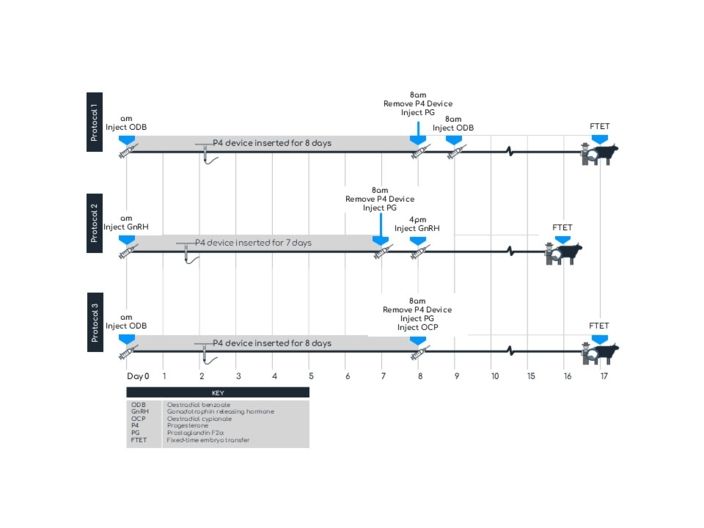
Some example synchronisation protocols for both heifers and cows are shown in image above, all of which can be used with or without equine chorionic gonadotrophin (eCG):
If you are wanting to maximise embryo pregnancies in a group, recipients may be re-synchronised to allow for an additional FTET around 23 days after the initial transfer. In some programs, three FTET transfers may negate the requirement for mop-up bulls and can keep females within a 12-month calving interval year on year.
Recipient females can be synchronised to enable transfer of fresh in vitro produced embryos. After scheduling the OPU and the production of embryos in the laboratory with the Nbryo team, a plan can be made to synchronise recipients accordingly. As actual embryo production numbers can be difficult to predict as there are several factors that impact outcomes, it is advisable to have some frozen embryos (either MOET or IVP derived) for transfer if there are excess quality recipients at the day of transfer. It is usually recommended that you synchronisation an extra 20% more recipients than what you expect to require based on embryo production forecasts, as some recipients may not be suitable on the day of transfer, or covering for additional embryos that may be produced as part of the process. An example schedule for donor and recipient females for fresh transfer is shown below.
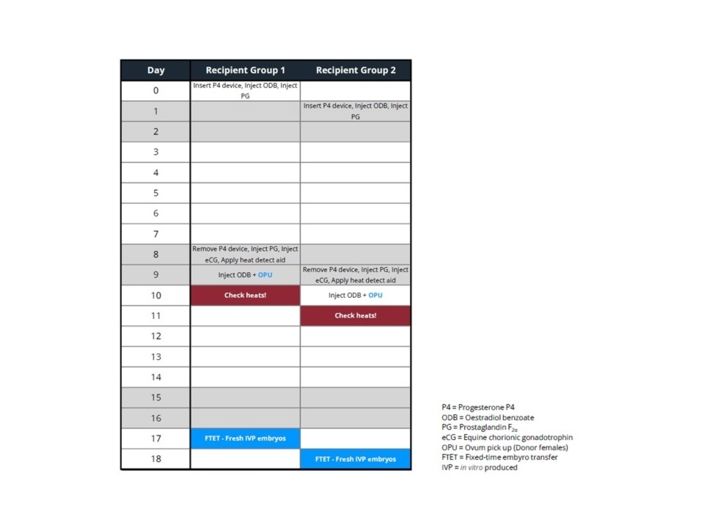
The ideal group size will depend largely on the quality of the facilities and the temperament of the recipient females. Well-designed facilities where cattle flow in a low stress manner will lend to more efficient embryo transfer. On average a day’s work of transferring embryos can vary between 90 to 130 embryos. Recipients can be broken down into smaller groups if numbers exceed this limit, and transfer can be completed over subsequent days. Transfer of more embryos is possible in a single day but requires additional labour and facilities design and a proposal can be built around this option. If it is the first time that a farm is transferring embryos, it is sometimes suggested to synchronise groups of 70 to 90 in a single day for transfer to ensure success and transfer in a timely manner. For more information on facilities design and requirements see our facilities resource.
After consulting with your veterinarian, a synchronisation protocol will be prescribed for the recipient group for FTET. As part of the protocol a defined list of treatments will be provided. It is important for all staff providing treatments and managing the recipients to pre-read the protocol keeping in mind the following:
If any mistakes are made during the synchronisation process, it is important that it is communicated to the Nbryo team so that any adjustments to the program can be made if possible, to ensure best possible results.
For more information regarding recipient selection and management, please get in touch with the Nbryo team.


